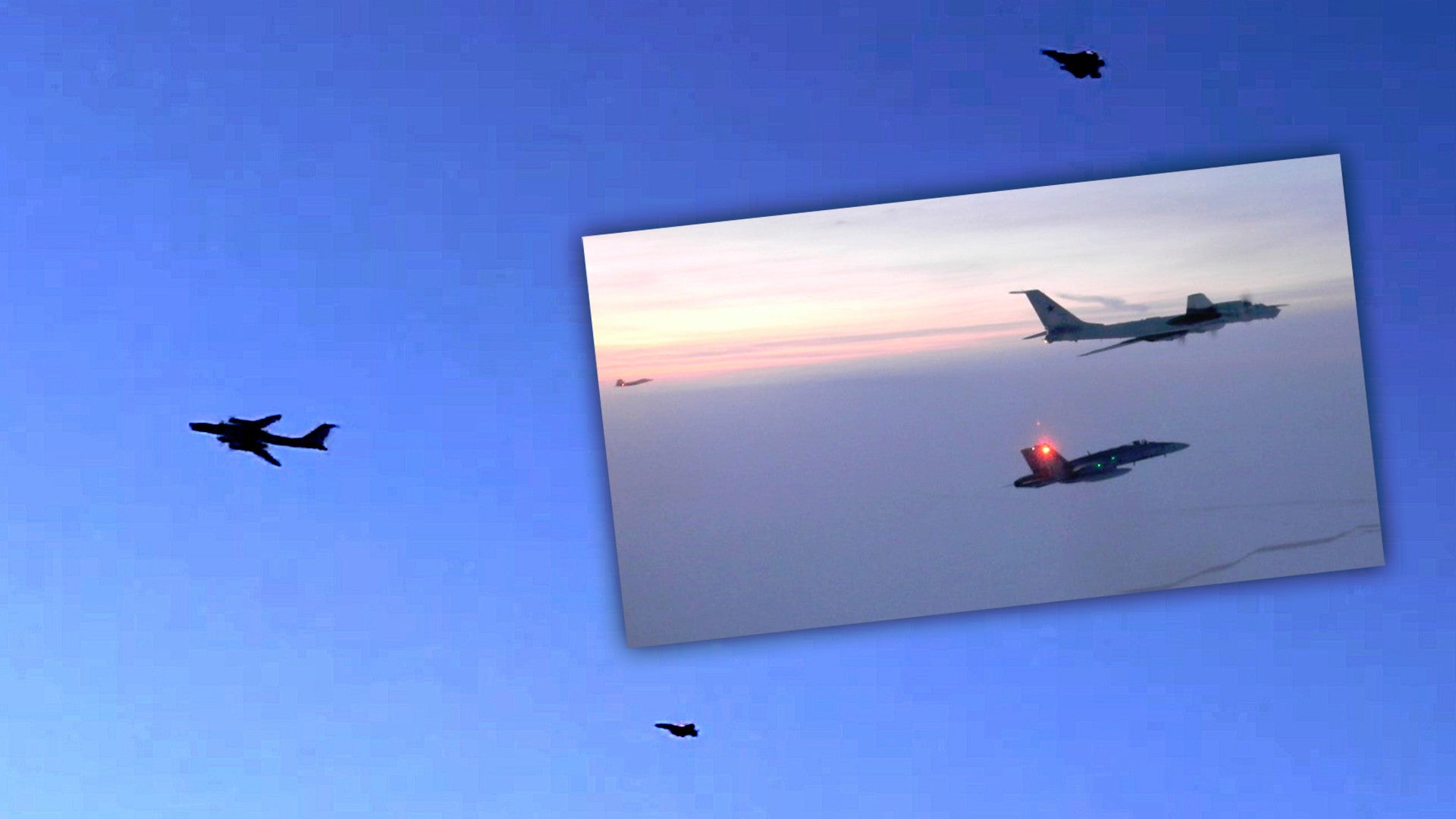The U.S.-Canadian North American Aerospace Defense Command, or NORAD, has released a video, which U.S. Navy personnel down below captured, showing a pair of Russian Tu-142 Bear maritime patrol aircraft flying at relatively low altitude over a site off the coast of northwest Alaska being used to support the latest iteration of the Navy’s ICEX submarine exercise. The U.S. military says that the Tu-142s loitered over the area for some time as part of a 12-hour-long patrol earlier this week.
U.S. Air Force General Terrence O’Shaughnessy, head of U.S. Northern Command, offered the additional details about the Tu-142s and their activities during a hearing before Congress on Mar. 10, 2020. The actual Russian patrol had taken place the day before. Air Force F-22 Raptor stealth fighters and Royal Canadian Air Force CF-18 Hornets escorted the maritime patrol planes while they flew through the Alaskan Air Defense Identification Zone (ADIZ). Russian aerial patrols near Alaska are not uncommon and routinely end without incident.
This particular flight was notable because a portion of the Russian mission took them over Camp Seadragon, a temporary base camp supporting ICEX 2020 in international waters off the coast of Alaska. The exercise began on Mar. 4 and will last approximately three weeks. The Seawolf class attack submarine USS Connecticut and the Los Angeles class attack submarine USS Toledo are taking part in this year’s ICEX.




It’s not clear which one shot the video of the Tu-142s flying overhead at approximately 2,500 feet, with three F-22s and a CF-18 escorting them. General O’Shaughnessy did not elaborate on exactly how long the maritime patrol planes remained over Camp Seadragon in particular, but NORAD has said that they were inside the boundaries of the Alaskan ADIZ for around four hours in total.
O’Shaughnessy did say that the Raptors had flown 750 miles from Elmendorf Air Force Base in Alaska to intercept the aircraft.
The Navy presently conducts ICEX once every two years. The exercise is ostensibly geared toward assessing the readiness of the service’s submarine force to operate in the Arctic region, as well as train with elements of other U.S. military services and military personnel from foreign allies and partners in this increasingly strategic region.


It also routinely serves as an opportunity to test new systems and concepts of operation. The Connecticut, in particular, along with the other two submarines in the Seawolf class, are highly secretive boats that are regularly engaged in a wide variety of sensitive test and evaluation and operational missions, including intelligence gathering.
“The Arctic is a potential strategic corridor – between Indo-Pacific, Europe, and the U.S. homeland – for expanded competition,” U.S. Navy Vice Admiral Daryl Caudle, Commander, Submarine Forces, said in a statement when ICEX 2020 began. “The Submarine Force must maintain readiness by exercising in Arctic conditions to ensure they can protect national security interests and maintain favorable balances of power in the Indo-Pacific and Europe if called upon.”
With competition increasing in the region, especially as global climate change causes the polar ice caps to recede, opening up new pathways for military warships and commercial shipping, it’s not necessarily surprising that Russia would want to make its presence felt during ICEX 2020. It would have also offered the Tu-142s a potential opportunity to get a closer look at the activity at Camp Seadragon.
The Russian long-range patrol underscored the need to have the “ability to react appropriately” and maintain a “persistent defense,” General O’Shaughnessy told legislators. As both the U.S. and the Russian military increasingly operating in the Arctic, it is very likely that the two countries will only further step up their monitoring of each other’s activities.
Contact the author: joe@thedrive.com
